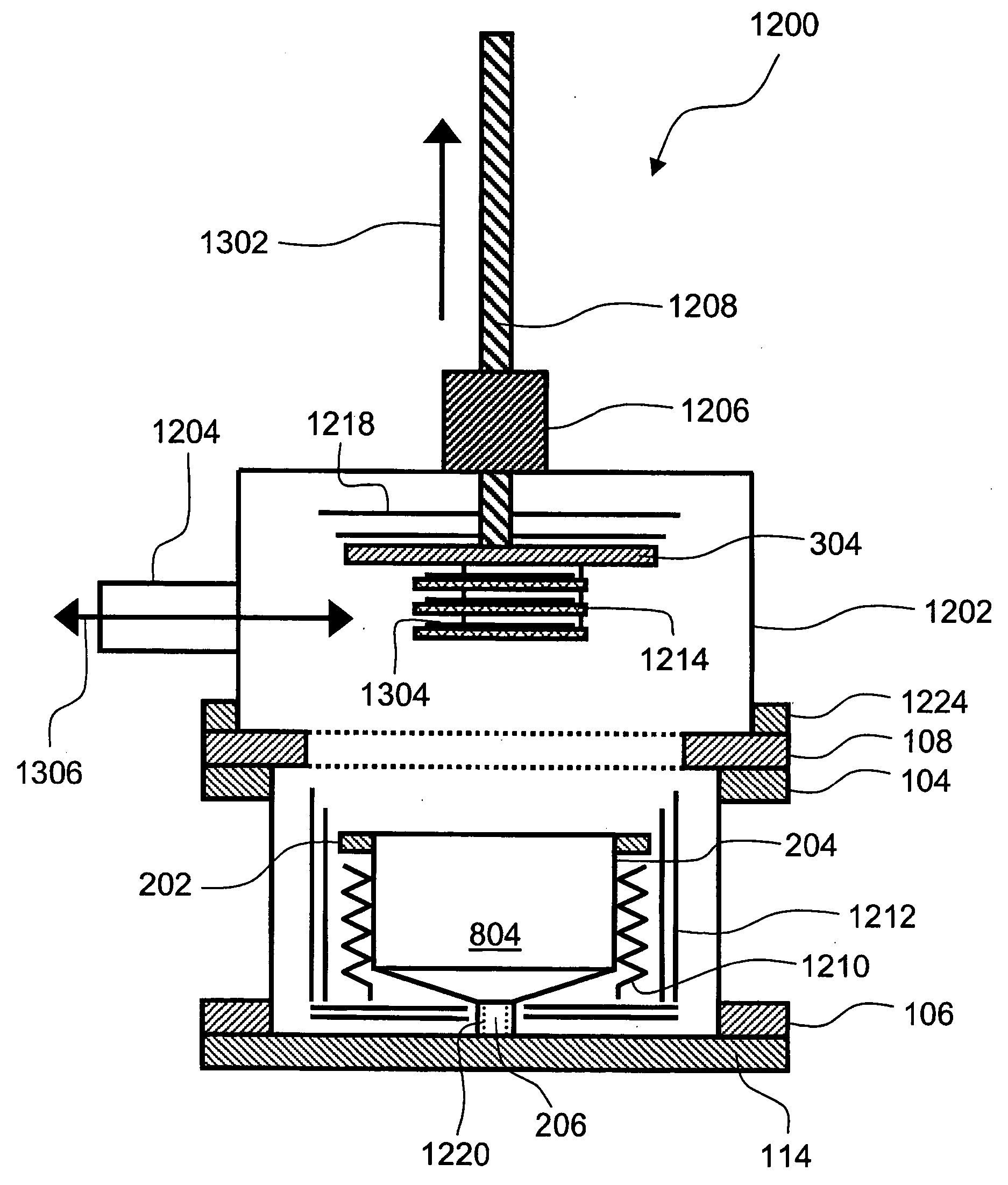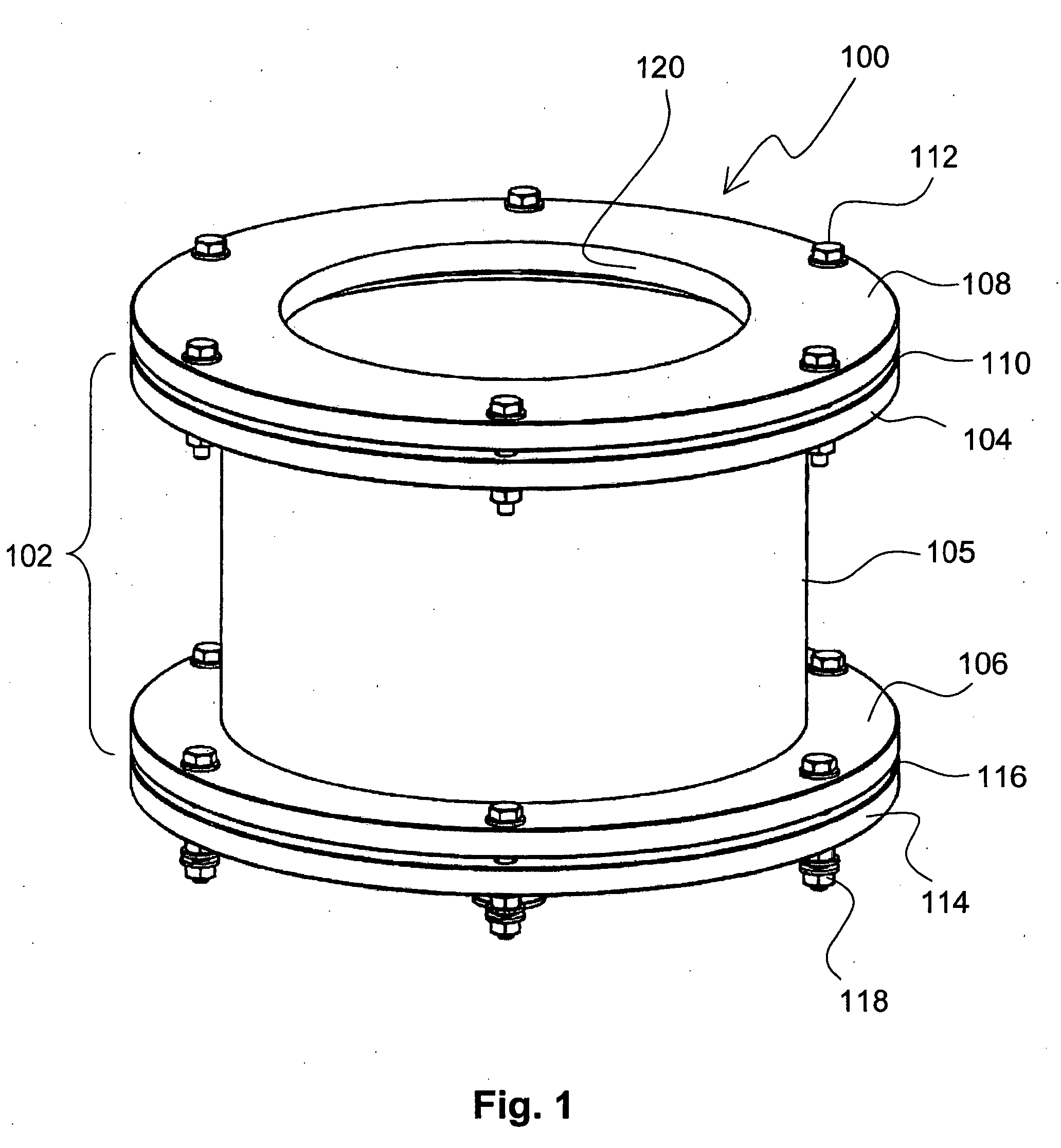Apparatuses and methods for deposition of material on surfaces
a technology of surface deposition and apparatus, applied in the direction of crystal growth process, chemically reactive gas, coating, etc., can solve the problems of non-uniform cvd (chemical vapor deposition) growth of film on the substrate, drastically shortening the life of the gate valve, and complex deposition cycl
- Summary
- Abstract
- Description
- Claims
- Application Information
AI Technical Summary
Benefits of technology
Problems solved by technology
Method used
Image
Examples
example 1
Deposition of a Binary Thin Film on a Single Substrate
[0105] Trimethyl aluminum (CH3)3Al, referred to as TMA hereinafter, and water were used as precursors for the deposition of Al2O3 thin film on heated surfaces within the reaction space of the SUNALE™ R-150 ALD reactor manufactured by Picosun Oy, Finland. TMA is liquid at room temperature and it has a vapor pressure of 13 hPa at 22° C., wherein 1 hPa=100 Pa=1 mbar. TMA can be injected from a temperature-controlled high-pressure liquid source. The source temperature for TMA was 20° C. Water is liquid at room temperature and it has a vapor pressure of 23 hPa at 20° C., which means that it can also be injected from a temperature-controlled high pressure liquid source. The source temperature for H2O was 20° C.
[0106] In this example a 150-mm silicon wafer with microelectromechanical structures (MEMS) on the wafer surface serves as a substrate. The dual-lid system was raised with a lifting mechanism to the upper position for accessing...
example 2
Deposition of a Ternary Metal Oxide on a Minibatch
[0109] Tetrakis(trimethylsiloxy)titanium [(CH3)3SiO]4Ti, referred to as TTMST hereinafter, was used as the titanium and silicon precursor. TTMST is liquid at room temperature and it has a vapor pressure of 13 hPa at 110° C., which means that it can be injected from a Heated Precursor Delivery System (HPDS). Water H2O and O3 were used as oxygen precursors. Water was injected from a temperature-controlled high pressure liquid source. Ozone is gas at room temperature and it was injected as ozone—oxygen gas mixture from a gas source.
[0110] The TTMST source was heated to a temperature selected from a temperature range of about 100-130° C. In this deposition example the TTMST source temperature was 120° C. The water source temperature was controlled with a peltier element cooler so that the temperature of the water source was preferably slightly below the room temperature, although temperatures above the room temperature can be used in o...
example 3
Deposition of a Multilayer Thin Film on Solid Particles
[0118] Rhenium is a very expensive element and it is advantageous to minimize the consumption of Re compounds in processes. On the other hand, the surface of the substrate is not always optimal for the growth of metals without a pretreatment. The flexibility of the present ALD reactor makes it possible to have an ALD reactor with four precursor sources, so that the pretreatment and the actual coating can be done with a single pump down in one reactor.
[0119] TMA was used as an aluminum precursor. TMA was injected from a temperature-controlled high-pressure liquid source. Water was used as the oxygen precursor and it was also injected from a temperature-controlled high-pressure liquid source. Rhenium trioxychloride ReO3Cl was used as the rhenium source chemical. ReO3Cl is liquid at room temperature and it has a vapour pressure of 1013 hPa at 131° C. It was injected from a heated high pressure liquid precursor source. A person sk...
PUM
| Property | Measurement | Unit |
|---|---|---|
| thickness | aaaaa | aaaaa |
| width | aaaaa | aaaaa |
| height | aaaaa | aaaaa |
Abstract
Description
Claims
Application Information
 Login to View More
Login to View More - R&D
- Intellectual Property
- Life Sciences
- Materials
- Tech Scout
- Unparalleled Data Quality
- Higher Quality Content
- 60% Fewer Hallucinations
Browse by: Latest US Patents, China's latest patents, Technical Efficacy Thesaurus, Application Domain, Technology Topic, Popular Technical Reports.
© 2025 PatSnap. All rights reserved.Legal|Privacy policy|Modern Slavery Act Transparency Statement|Sitemap|About US| Contact US: help@patsnap.com



